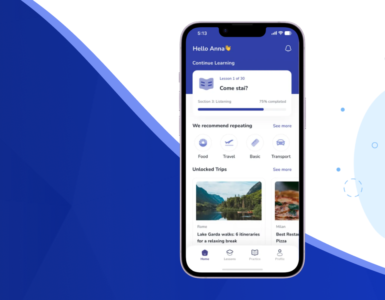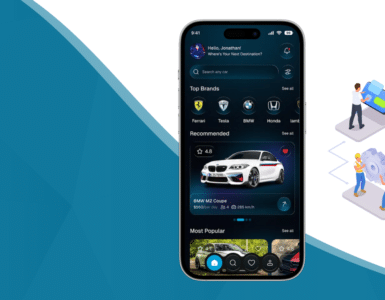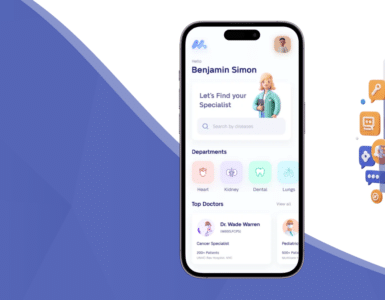Imagine coming home after a long day at the office, only to be struck by sudden, intense stomach pain. The mere thought of reaching a local clinic seems unbearable. In today’s digital world, everything from food to cabs is just a few clicks away. Fortunately, this convenience has extended to healthcare as well. With the rise of on-demand healthcare services, patients can now consult doctors virtually, anytime and anywhere.
According to Statista, the global telemedicine market is booming and projected to reach $460 billion by 2030. If you’re planning to ride this wave, developing a telemedicine mobile app is a smart move.
Why Telemedicine App Development Is Crucial Today
A professional-grade telemedicine app allows patients to:
-
Connect with doctors virtually
-
Schedule consultations
-
Make secure payments
-
Access healthcare without delays
Bridging the Gap Between Physicians and Patients
Here’s a compelling statistic: New patients wait an average of 20+ days to get an appointment with a physician. Due to such delays, they often turn to emergency departments instead. Over 80% of patients believe technology makes healthcare more accessible (McKinsey & Company). They prefer SMS, app messaging, and video calls for medical consultations.
Types of Telemedicine App Services You Can Build
Before you start building, identify what services your app will offer. Here are the most popular telemedicine service models:
1. Interactive Telemedicine
Allows video and phone consultations. Common in:
-
Mental health therapy
-
Neuropsychology
-
Post-injury care
-
Pharmaceutical guidance
2. Smartphone App-Based Telemedicine
Mobile-first health services have become a norm. Patients now manage their health through user-friendly apps—no waiting rooms, no travel.
3. Store-and-Forward Telemedicine
Patients can send photos or reports, like dental images, without video calls. Ideal for asynchronous consultation.
4. IoT-Based Telemedicine
IoT medical devices monitor blood pressure, heart rate, and blood sugar in real-time. Data is synced with the app, enabling doctors and patients to track vitals remotely.
Read more on IoT in Healthcare in our dedicated article.
Steps to Develop a Successful Telemedicine App
Step 1: Ideation and Research
Partner with a trusted app development company and start with:
-
Competitor analysis
-
User pain point discovery
-
Feature planning
-
Prototyping
-
App testing
Step 2: Choose the Right Development Model
Custom-built telemedicine apps ensure scalability and personalization. Include:
-
User profiles for doctors and patients
-
Audio-video consultation
-
Chat integration
-
Real-time notifications

Tech Stack for Telemedicine App Development
1. Big Data
Use Electronic Health Records (EHRs) to store, analyze, and retrieve critical patient data securely. Ensure cloud-based access for easy integration.
Learn more about EHR Integration
2. Artificial Intelligence
Incorporate:
-
AI-based chatbots
-
Natural Language Processing (NLP)
-
Machine learning for diagnostics
-
Voice recognition tools
These innovations are transforming telehealth into smart, responsive platforms.
User Panel Creation in Telemedicine App
A well-built app has four main user types, each requiring specific features:
1. Patients
-
Send consultation requests
-
Book appointments
-
Access lab reports and prescriptions
2. Physicians
-
Manage schedules
-
Prescribe medication
-
View EMR and consult reports
3. Lab Technicians
-
Upload test results
-
Communicate with doctors and patients
4. Admin
-
Manage user roles
-
Track performance
-
Oversee platform integrity
Key Features for Doctors
-
Doctor Profile Setup – Add qualifications, certifications, and experience
-
Appointment Scheduling – Accept, reschedule, or decline appointments
-
Prescription Module – E-prescribing with dosage and timing
-
Electronic Medical Records (EMR) – Instant access to medical history
Key Features for Patients
-
Patient Dashboard – Name, age, gender, medical history
-
Doctor Search Filters – Language, specialty, gender, availability
-
Real-Time Audio/Video Calls – For symptom diagnosis
-
Easy Booking System – With confirmation alerts
-
Multi-Mode Payment Gateways – Credit card, UPI, wallets, etc.
Other Must-Have Features
1. Data Security & Compliance
Use end-to-end encryption, HIPAA compliance, and multi-factor authentication to protect patient data.
2. Instant Messaging
Enables seamless, real-time doctor-patient interactions.
3. Video Conferencing
Offer HD video consultations via mobile or desktop platforms.
4. Clinical Documentation
Enable doctors to keep private, organized records for legal and clinical purposes.
Is Now the Right Time to Build a Telemedicine App?
Absolutely. With rapid digitization in healthcare, a telemedicine app offers:
-
Increased efficiency
-
Expanded reach
-
Cost-effective patient care
-
Stronger doctor-patient relationships
By investing in custom telemedicine app development, you’ll stay ahead of competitors. Build the app with scalable architecture, cutting-edge features, and a user-friendly interface that fits your business model.
Looking for guidance on choosing the right developers? Check out How to Hire the Best App Development Team
Final Thoughts
The telemedicine sector is growing fast, and users expect smooth, secure, and speedy solutions. If you’re ready to dive in, focus on developing an app that is robust, regulation-compliant, and tailored to your target audience.
Let our expert developers help you create a game-changing telehealth app. Contact us today to start your journey in digital healthcare innovation!
























